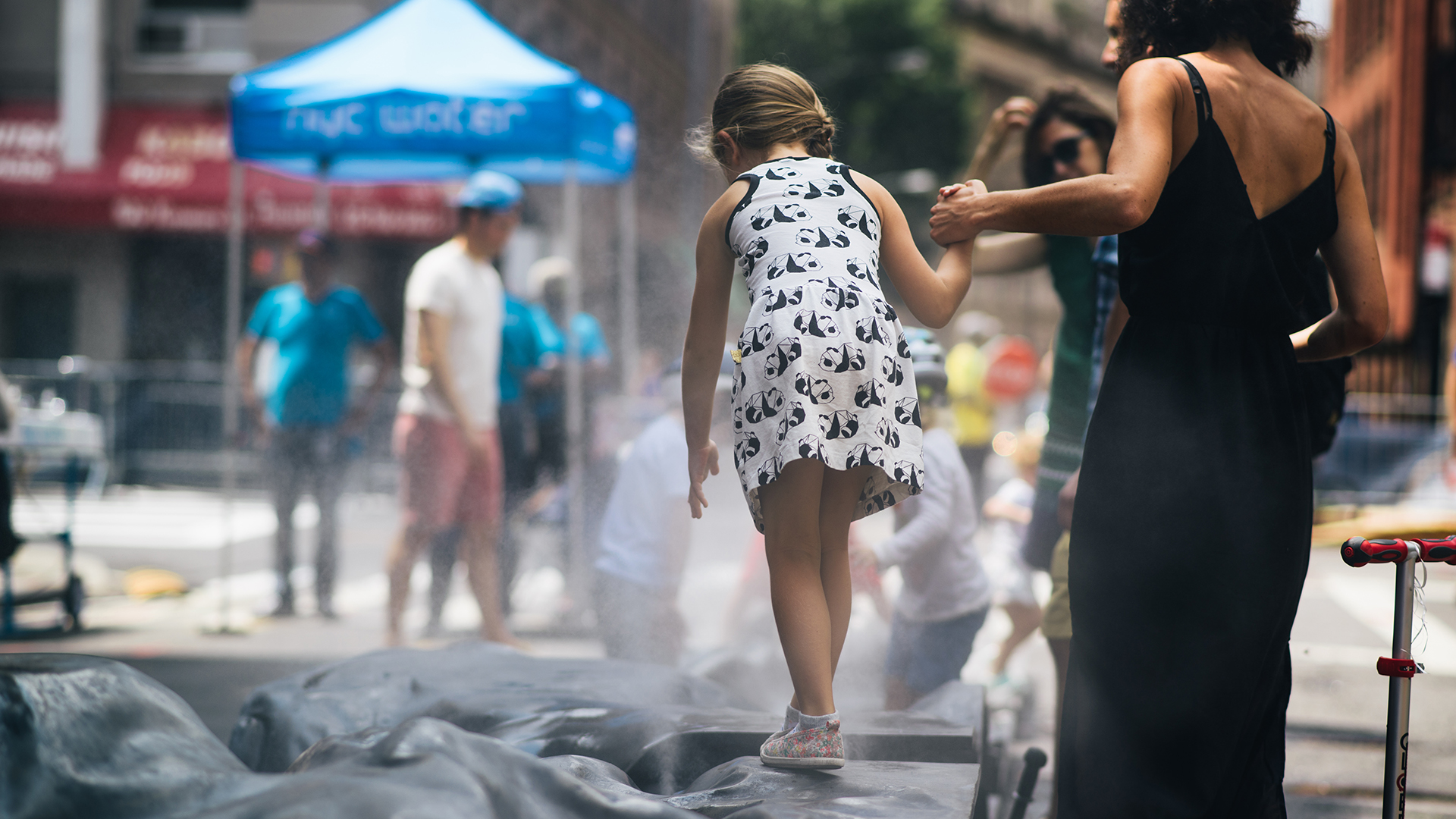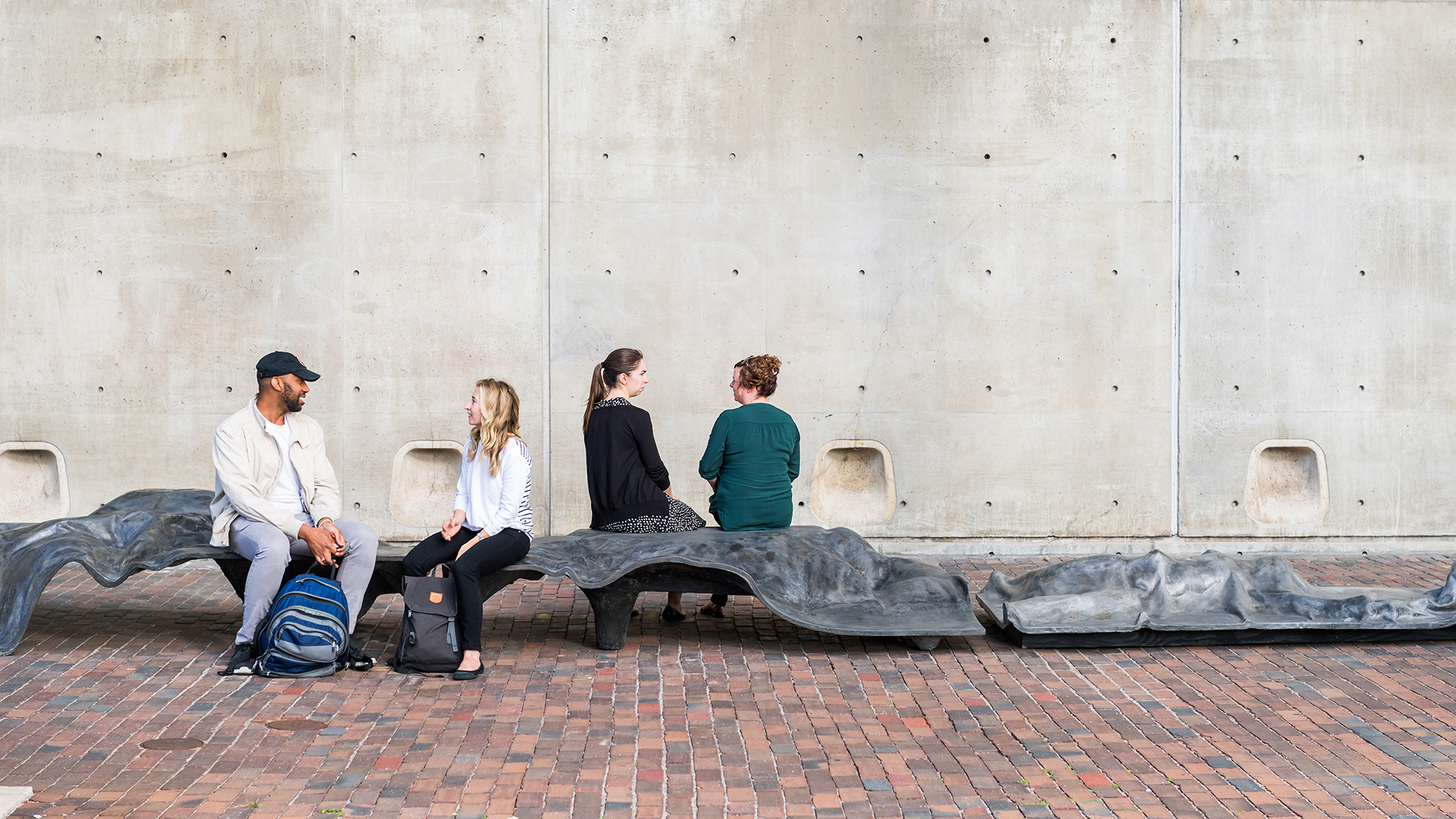PULSUS
A 32-ft-long experimental interactive concrete installation that – via an embedded system of sensors and transducers – serves as an augmented urban instrument, listening to the pulse of its surroundings and reinterprets that pulse into an immersive experience for visitors.
MISSION - Design and fabricate a site-specific public art piece for the 2017 NYC SummerStreets Festival
TIMEFRAME - Summer 2016 through Winter 2017
CLIENT - NYC Department of Transportation + Harvard Graduate School of Design
TEAM - INVIVIA
MY ROLES - Research, ideation, prototyping, concept rendering, project management and communication, fabrication, and installation maintenance
RESEARCH
Our research began with a visit to the 2016 festival when I surveyed the site, the event organization, and the atmosphere/spirit the festival exuded. One of the most prominent things I noted down was the quietness of the avenues. Aside from festival goers, the hustle and bustle so signature of Manhattan was absent, and the weight of the solemn concrete and asphalt became palpable.
I brought my notes and observations back to the team and we started brainstorming within our constraints. Right from the beginning, we agreed that the sculpture should be cast in concrete with a relatively novel fabric-form casting technique. This technique promised more daring forms, and the narrative of having a sculpture in NYC made from the same material that gives this concrete jungle its gravity-defying compelled all of us.
With the material decision made, we explored possible forms through physical wire mesh, modeling clay, and 3D renderers. Our studio was comprised of a mixture of architects and artists, so our exploration often became a balancing act between the artists – who wanted the form to push the limit of what was physically possible, and the architects – who wanted the form to follow the sculpture’s function as an ergonomic public bench. Throughout this process, we were in open communication with our fabricator so that we could understand their manufacturing and budgeting constraints.
Our earliest form tests with modeling clay.
Elevation render of a wave-like concept with figure scales.
Shaded wire-frame drawing of a tessellated concept.
Perspective render of a wave-like concept.
IDEATION & PROTOTYPING
Once we had a working understanding of the fabric-form concrete process, we reined in our ideation process to focus on forms that were physically possible. The narrative of the sculpture sharing the same material as the city stood out to me, and so to push the parallel, we drew inspiration from how the concrete forms of New York were molded and folded by people over the years and devised a working plan for how we could form the concrete by draping a tarp over human figures. The story then became one about the human within the material – how something that has become synonymous with immobility and rigidity can yield to the human touch.
Quick sketches of the body configurations on each of the four panels.
A physics simulation of the cloth-draping behavior on Autodesk Maya with found posable mannequin models.
A rendered image of an early design of PULSUS installed on-site in SoHo.
For the interactive component of the sculpture, we were limited in options because of the possible direct sunlight on site and the lack of precedent in interactive concrete interfaces. Thus we decided to focus on auditory and tactile experiences. We began looking into existing bone-conduction technology as well as literature on the theories behind urban sound- and sensory-scapes. Our research landed us on commercial sound transducers, but because our material of choice was GFRC, it was difficult to gauge the effectiveness of vibration conduction without a physical prototype. So, we built one ourselves.
The smaller prototype in concrete perched in our office as we tested it with various sound transducers.
FABRICATION
We leveraged our contacts in Harvard’s Graduate School of Design, hired a graduate skilled in fiberglass mold-forming, and converted our studio basement into a workshop to produce the molds that would be sent off to a GFRC spraying service.
Saturated with resin, the draped fiberglass cloth was left out to dry slowly, capturing the forms beneath.
We painted the hardened fiberglass form with many layers of chemicals to strengthen the mold and separate it from the concrete that would soon be sprayed onto it.
The mold making process was incredibly demanding. The shell comprised of many layers of resin, fiberglass sheets/mats, Bondo, and sealants, with hours of sanding by hand in between. When we constructed our scaled prototype, we learned the way some of these layers interact with each other, but we still had to consult with many experts in mold-making for recommendations of brands and techniques. In parallel to the concrete casting process, we worked on schematic drawings of the electronics and tested devices on concrete. These two tracks were in constant communication with each other because as the forms were being made, we had to consider how it might need to be changed to accommodate fixtures underneath, and the drawings would also have to change depending on how the poured and cast concrete turned out.
After testing out many products, we settled with an array of sound transducers per concrete panel coupled with contact mics to take in user input. Because the sculpture debuts in the sweltering New York summer heat, we included a misting system. Everything was connected to a laptop running a custom-written program that sampled the activity of the city and converted that pulse dynamically into low-frequency sounds and vibrations. We worked closely with a sound engineer to design this translation. We also scripted a tool that parses local social media and added the contribution to the soundscape. Once everything was hooked up, we had to calibrate the system – with different measures for the specific resonant frequency of each panel – so that the output would not overwhelm the input that we were collecting from people interacting with the sculpture.
Close-up of a surface transducer working on the concrete surface.
DEBUT IN SOHO
The installation opened in an early August morning in SoHo – to a throng of children eager to play on the concrete, much to our surprise. The narrative remained one of tuning into the city pulse through an audio-tactile concrete interface, but we didn’t foresee the dynamism that the event planners have brought to us with their last-minute decision to put a children’s obstacle course and a cardio yoga stage both within 50 meters of us. We welcomed the surprise: our form adapted to this new context, and it delighted us how our attempt to bring the energy of the city to its people became its people bringing the city’s energy to the installation.
PULSUS opens in SoHo on a sweltering summer day, ready to welcome SummerStreets festival goers. Image courtesy of Jake Welter.
Visitors rest their ears against the concrete surface to listen to the pulse of NYC. Image courtesy of Allen Sayegh.
A girl walks through the mist that envelopes PULSUS as she holds onto her mom’s hand. Image courtesy of Jake Welter.
A NEW LIFE
After SoHo, we brought the sculpture to the GSD and adapted it the new environment, modifying the scope of the social media data to Cambridge. We also parsed the GSD student open email list-serve, fed the finds into a text-to-speech program, and plugged the soundbites into the existing audio generator program. The result was a humorous interpretation of what was commonly perceived to be matter-of-fact communication within the school through tongue-in-cheek robotization of human speech.
PULSUS installed in front of Gund Hall of the Harvard Graduate School of Design. Image courtesy of GSD Exhibitions.
PULSUS installed in front of Gund Hall of the Harvard Graduate School of Design. Image courtesy of GSD Exhibitions.
From here on, PULSUS will travel to other locations. We designed the interaction with adaptability in mind, so wherever the sculpture resides, it can be effortlessly re-calibrated to interpret the pulse of its new home.

















